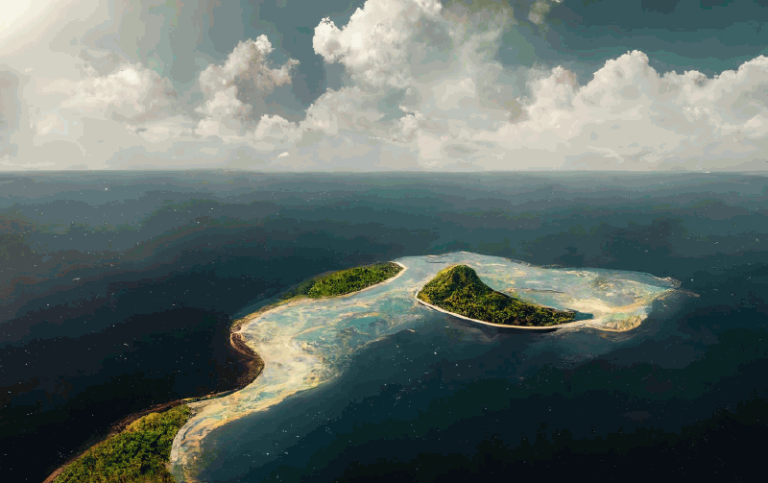What is the Difference between Sea And Ocean
There is a big difference between the sea and the ocean. The main difference is that the sea is a smaller body of water than the ocean. The ocean is much larger, and it has more salt in it.
The other main difference is that the ocean has waves, while the sea does not always have waves.
The terms “sea” and “ocean” are often used interchangeably, but there is a big difference between the two. The main difference is in size – an ocean is much larger than a sea. An ocean covers about 71% of the Earth’s surface, while a sea only covers a small fraction.
In addition, oceans are deep, while seas are shallow. Oceans are very important to our planet. They regulate the global climate and weather patterns and are home to a huge variety of plant and animal life.
They also provide many resources, such as food, oil, and minerals. Seas are also important but on a smaller scale. They can be found worldwide and offer many benefits to humans, such as recreation (such as swimming, boating, and fishing), transportation routes, and sources of food and minerals.
What are the 7 Seas And 5 Oceans?
There are only five oceans on Earth, although there is some debate about which bodies of water should be classified as “oceans.” The Pacific, Atlantic, Indian, Southern (also called Antarctic), and Arctic Oceans cover nearly 75% of the planet’s surface. However, several smaller seas are often grouped with one or more of the oceans.
These include the Mediterranean Sea, Black Sea, Red Sea, and North and South China Seas. So why are there only five oceans? It has to do with how they were defined.
The International Hydrographic Organization (IHO) sets the standards for nautical charts and defines ocean boundaries. According to the IHO, an ocean is a “division of the World Ocean … delimited by lines of latitude and longitude.” As a result, any large body of water located wholly within one hemisphere cannot be considered an ocean (hence why the Southern Ocean is sometimes left out).
The seven seas refer to a historical grouping of bodies of water – specifically those surrounding Europe and Africa – that were once commonly traveled by merchants and sailors. This includes the Aegean Sea, Adriatic Sea, Ionian Sea (all in the Mediterranean), Tyrrhenian Sea (between Italy and Sicily), Ligurian Sea (northwest coast of Italy), Balearic Sea (off Spain), Gulf of Lion (off France), Alboran Sea (off Spain and Morocco), Arabian Sea (off India), Red sea, black sea, etc. Oceans cover 71% of Earth’s surface.
The average depth of an ocean is 3790 m The deepest point in an ocean is Challenger Deep in Mariana Trench at 10911 m deep.
Which is Deeper the Ocean Or the Sea?
There is a common misconception that the ocean is one big body of water when it is made up of many different smaller bodies of water. The largest and deepest of these is the Pacific Ocean, followed by the Atlantic Ocean, then the Indian Ocean. The Mediterranean Sea, which lies between Europe and Africa, is also considered part of the ocean.
The ocean’s average depth is around 12,000 feet (3.7 kilometers), while the average depth of the sea is only around 3,900 feet (1.2 kilometers). This means that, on average, the ocean is more than three times as deep as the sea. However, some areas of the ocean are much deeper than this.
For example, parts of the Mariana Trench in the Pacific Ocean reach depths of over 36,000 feet (11 kilometers).
Is Beach a Sea Or Ocean?
Is the beach a sea or an ocean? This is a question we get asked often and cannot be easy to answer. Technically, a beach is both a sea and an ocean.
However, the term “beach” is most commonly used to refer to the shoreline of an ocean. So, in most cases, when people say “beach,” they are referring to an ocean beach.
What is the Difference Between Sea And Ocean Wikipedia
The terms sea and ocean are often used interchangeably, but there is a difference between the two. The world’s oceans cover 71% of the Earth’s surface and contain 97% of the planet’s water. Seas are smaller bodies of saltwater that are partially enclosed by land.
Four seas border North America: the Arctic Ocean, Atlantic Ocean, Pacific Ocean, and Gulf of Mexico. The largest ocean is the Pacific Ocean which covers about 30% of the Earth’s surface. It extends from Asia to North and South America and is twice as large as the second-largest ocean, the Atlantic Ocean.
The Atlantic is located between North and South America on one side and Europe and Africa on another. The third largest ocean is the Indian Ocean which lies between Asia and Africa. And finally, the Arctic Ocean is located around Antarctica and Greenland and north of Europe, Asia, and North America.
So what exactly sets an ocean apart from a sea? An ocean is generally defined as a body of salt water that covers more than 20 million square kilometers (km2). In other words, it must be pretty big!
Additionally, an ocean typically has an average depth greater than 1 kilometer (1000 meters). Seas can occur where there is an opening in the continental shelf, or they may be completely enclosed, like in the Mediterranean Sea or the Red Sea. In contrast to oceans, seas tend to be much smaller bodies of water that are only partially surrounded by landmass.
For example, while the Pacific Ocean covers 64 million km2 of the earth’s surface, the Sea of Japan occupies only 700 000 km2. Most seas also have shallower average depths compared to oceans; for instance, whereas the Pacific has an average depth of 4 kilometers, the Yellow sea’s average depth is only 60 meters. Finally, seas are usually connected to larger oceans, gulfs, and bays via narrow straits or channels.
Conclusion
The ocean is a big place. So big that it can be hard to wrap your head around its size. The ocean’s average depth is about 2.5 miles, covering nearly 71% of the Earth’s surface.
The Pacific Ocean makes up more than 30% of the Earth’s total water mass. But what exactly is an ocean? And how is it different from a sea?
An ocean is a large body of salt water that covers most of the Earth’s surface. Oceans are divided into four main oceans: the Pacific, Atlantic, Indian, and Arctic. A sea is a smaller body of saltwater located within an ocean or along its shores.
Many seas worldwide, including the Mediterranean, Red, and North Seas. So what’s the difference between an ocean and a sea? An ocean is simply a larger body of salt water than a sea.
However, there are other differences between these two bodies of water. For example, seas are often shallow (relatively speaking) compared to oceans. Additionally, seas are usually partially enclosed by landmass, whereas oceans are not typically bordered by land (except for the coastline).



